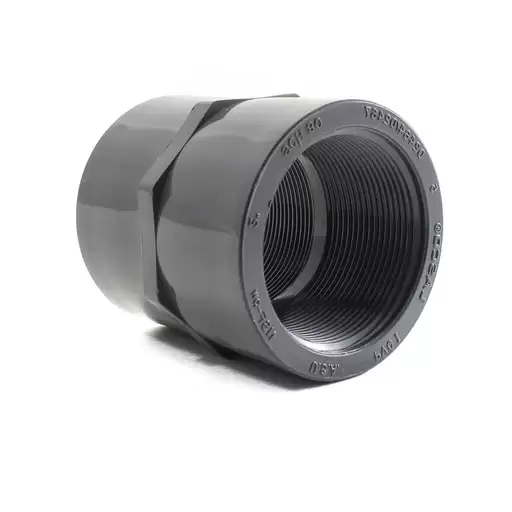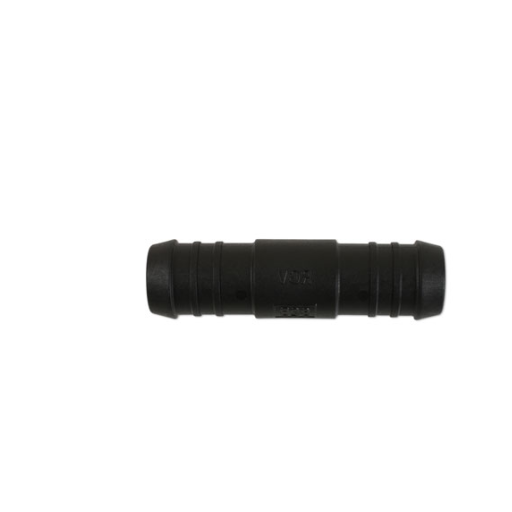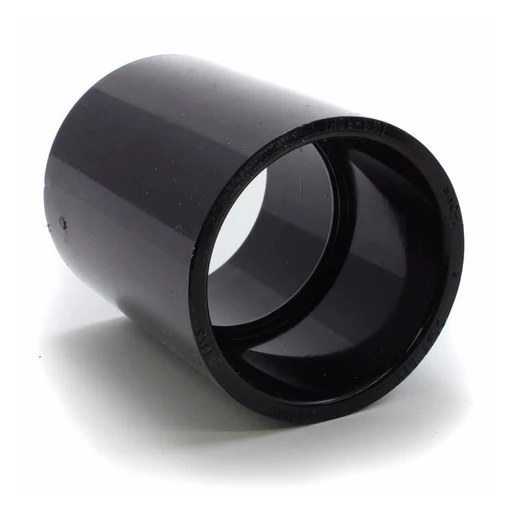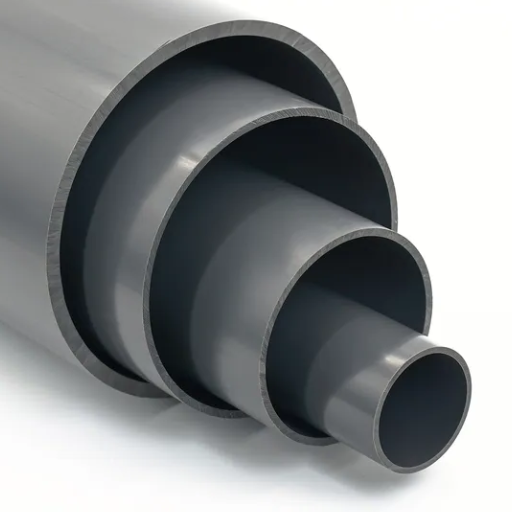Understanding the Basics of Pipe Connections

What are Polyethylene and PVC Pipes?
Polyethylene pipes (PE pipes) are versatile plastic pipes known for their flexibility, durability, and corrosion resistance. These pipes excel in water transfer, gas transport, and irrigation system applications. They are lightweight and form a reliable selection for residential or civil works due to their strength against environmental effects.
PVC (polyvinyl chloride) pipes are rigid and strong, manufactured from a different type of plastic. They’re commonly used for plumbing, drainage, and sewage systems due to their strength and durability. These pipes resist chemical corrosion and pressure very well, making them ideal for high-pressure systems requiring structural integrity.
| Property | Polyethylene (PE) | PVC |
|---|---|---|
| Flexibility | High – allows expansion/contraction | Low – rigid structure |
| Best Applications | Water transfer, gas transport, irrigation | Plumbing, drainage, high-pressure systems |
| Temperature Response | Handles temperature changes well | Less flexible with temperature variation |
| Installation | Requires mechanical fittings | Can be solvent-welded or mechanically joined |
Material Properties and Compatibility
The key differences between these materials must be considered for successful piping systems:
- Polyethylene pipes: Flexible and resistant to cracking from temperature changes, ideal for systems with frequent environmental changes or soil displacement
- PVC pipes: Rigid and strong, better for high-pressure applications requiring structural integrity
- Chemical resistance: Both materials resist corrosion, but PE is particularly good for potable water, while PVC excels in fixed high-pressure systems
Why Use a Transition Coupling?
Transition couplings provide several critical benefits:
- Maintain watertight and airtight seals
- Handle differences in pressure ratings and diameter
- Provide uniform, strong, and reliable connections
- Easy installation without special tools
- Cost-effective solution for both temporary and permanent systems
Tools and Materials Required for the Job
Essential Tools for Connecting PVC and Poly Pipe
Sharp cutter for making clean, crisp cuts. Rough cuts with jagged edges may interfere with proper sealing.
Smooths edges to prevent leaks and ensure a tight fit between pipes.
Holds connections securely, especially for flexible pipes. Stainless steel clamps are preferred for rust resistance.
Essential for precise measurements to ensure perfect alignment and sizing.
Required for bonding PVC pipes securely. Primer cleans and softens the surface; cement creates the bond.
For tightening nuts, bolts, or clamps during assembly.
Choosing the Right Fittings and Couplings
Selecting appropriate fittings is crucial for proper installation:
- PVC pipes: Use solvent-weld fittings
- Polyethylene pipes: Use barbed fittings with clamps
- Size matching: Use calipers or measuring tools to confirm internal/external measurements
- Pressure ratings: Ensure fittings match system pressure and flow requirements
- Modern options: Consider quick-connect and push-to-fit designs for easier installation
Additional Materials for Leak Prevention
| Material | Purpose | Application |
|---|---|---|
| PTFE Tape | Leak-proof threaded connections | Wrap around pipe threads before assembly |
| Gasket Materials | Create tight seals between flanges | Place between connecting surfaces |
| Industrial Sealants | Handle vibration and temperature fluctuation | Apply to joint areas before assembly |
| Anti-corrosive Coatings | Protect metal parts from corrosion | Spray or coat metal components |
Step-by-Step Guide to Connecting PVC and Poly Pipe

1Preparing the Pipe Ends
Proper preparation is essential for leak-proof connections:
- Cut pipes to length: Use a pipe cutter or fine-tooth saw for straight, clean cuts
- Remove burrs: Use a deburring tool or sandpaper to smooth rough edges
- Clean thoroughly: Remove all dirt, grease, or solvent residue with PVC pipe cleaner
- Apply primer: For PVC, apply primer evenly around the pipe end and inside the fitting
- Check compatibility: Ensure fittings match pipe materials
2How to Use a Transition Coupling
- Clean pipe ends: Remove all dirt, grease, or debris
- Measure and mark: Ensure proper insertion depth per manufacturer specifications
- Align pipes: Slide coupling onto first pipe until fully seated
- Insert second pipe: Push into coupling on opposite side until fully seated
- Check alignment: Verify both pipes are properly positioned
- Tighten connections: Use specified torque values for clamps or screws
3Securing the Connection
Follow these critical steps for a secure, lasting connection:
- Use a torque wrench: Tighten to the manufacturer-specified torque values
- Avoid over-tightening: It can damage components
- Avoid under-tightening: May cause leaks
- Perform leak tests: Use pressure testing over simple water runoff
- Schedule maintenance checks: Regular inspections prevent future problems
Best Practices for a Durable Connection

Avoiding Common Pitfalls
Common Mistakes to Avoid:
- Incorrect installation of transition couplings
- Not considering temperature or ground movement effects
- Using inferior or inappropriate materials
- Inconsistent or delayed maintenance
Expert Tips for Achieving a Strong Seal
- Choose appropriate materials: Select sealants designed for your specific environmental conditions
- Prepare surfaces properly: Clean, dry surfaces are essential for good bonding
- Apply sealant correctly: Follow manufacturer’s instructions for uniform application
- Allow proper curing time: Don’t rush the process
- Perform pressure tests: Validate seal integrity before full operation
- Schedule regular inspections: Incorporate seal checks into maintenance routines
Maintaining Your Connection Over Time
Long-term connection security requires proactive maintenance:
- Environmental monitoring: Consider weather conditions, wear and tear
- Advanced monitoring systems: Use IoT sensors for real-time feedback
- Stay updated: Keep current with the latest standards and materials
- Predictive maintenance: Use data-driven approaches to optimize schedules
Troubleshooting Common Issues

Dealing with Pipe Warping and Sizing Mismatches
| Problem | Causes | Solutions |
|---|---|---|
| Pipe Warping | Temperature fluctuations, mechanical stress | Use thermal-resistant materials, regular inspections |
| Sizing Mismatches | Installation errors, measurement mistakes | Precise measuring instruments, verify dimensions before installation |
Identifying and Fixing Leaks
Modern leak detection and repair strategies:
- Detection tools: Ultrasonic leak detectors, thermal imaging cameras
- Immediate response: Isolate affected area, perform root-cause analysis
- Temporary fixes: Clamps and sealants for immediate damage control
- Permanent repairs: Use standard replacement parts and proper installation practices
- Prevention: IoT monitoring systems for continuous surveillance
When to Call a Professional
Call a professional when:
- Dealing with large-scale leaks involving hazardous substances
- Experiencing recurring leaks with unknown causes
- Planning major equipment upgrades or system overhauls
- Needing compliance with regulatory requirements
Frequently Asked Questions (FAQ)
Use a transition fitting to connect polyethylene pipe to PVC. Cut the poly pipe cleanly, use a compression fitting or slip fitting, and secure with clamps or rings.
You need a transition fitting or adapter specifically designed for connecting polyethylene and PVC pipes. Choose brass or plastic based on your application and pressure requirements.
No, you cannot glue polyethylene pipe to PVC. Use mechanical connections like compression fittings or couplings instead.
Compression fittings create water-tight seals between pipes using a nut, ring, and fitting. Tightening the nut compresses the ring against the pipe, securing the connection.
Maximum psi depends on the specific fittings and application. Ensure your fittings are rated for your water line’s pressure requirements to prevent leaks.
Yes, HDPE pipe can be connected to PVC using transition fittings or compression couplings. Ensure clean cuts and proper diameter matching.
You need a pipe cutter, wrench, and possibly worm gear clamps for barb fittings. A measuring tape ensures accurate length measurements.
Clean pipe ends, make straight cuts, use appropriate fittings, tighten properly, and check for leaks after installation.
Not always necessary, but female adapters can enhance connections by allowing PVC male fittings to connect easily to polyethylene pipe.
Cut out the damaged section and replace it with new material. Connect the new polyethylene pipe to PVC using appropriate fittings.
References
- Syracuse University – Valves and Accessories for Assembly of Polyethylene Pipes
- University of Washington – Pipe Materials: Attaching PVC Pipe without Adhesive
- TIA Technical Manual – Use of Plastic Pipe in Dams and Dikes






